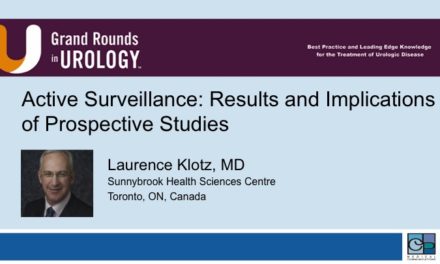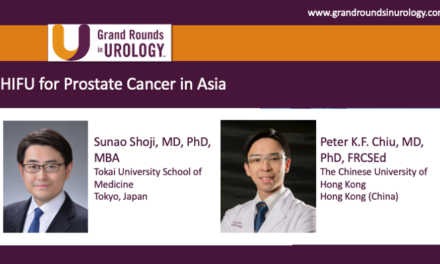Fergus Coakley, MD, presented “Optimizing MRI Targeted Biopsy – Including Endorectal Imaging for Tumor Localization and In-Bore Biopsy for Tissue Diagnosis” during the 7th Global Summit on Precision Diagnosis and Treatment of Prostate Cancer on September 21, 2023.
How to cite: Coakley, Fergus. “Optimizing MRI Targeted Biopsy – Including Endorectal Imaging for Tumor Localization and In-Bore Biopsy for Tissue Diagnosis.” September 21, 2023. Accessed May 2025. https://grandroundsinurology.com/optimizing-mri-targeted-biopsy-including-endorectal-imaging-for-tumor-localization-and-in-bore-biopsy-for-tissue-diagnosis/
Optimizing MRI Targeted Biopsy – Including Endorectal Imaging for Tumor Localization and In-Bore Biopsy for Tissue Diagnosis – Summary
Fergus Coakley, MD, discusses the use of MRI targeted biopsy for tumor localization and in-bore biopsy for tissue diagnosis. He begins by noting the changing paradigm of tumor diagnosis, moving away from the traditional systematic TRUS biopsy after an abnormal PSA or DRE, towards a multiparametric MRI and target-only biopsy after abnormal PSA or DRE. He discusses the benefits of multiparametric MRI over TRUS, addressing the issues of multifocality, overdiagnosis, and underdiagnosis in prostate cancer.
Dr. Coakley then discusses the benefits of including endorectal imaging as part of the multiparametric MRI to avoid underdiagnosis in patients. He presents a few examples of patients with known prostate cancer whose tumors were not visible through outside MRI alone.
Dr. Coakley addresses in-bore versus fusion biopsy for tissue diagnosis. He notes that fusion biopsy does not take into account prostate deformation during the procedure. He then presents evidence that in-bore biopsies are roughly as accurate as off-target fusion biopsies, and concludes that technical and interpretive variability is the biggest challenge facing clinicians in tumor diagnosis today.
The Global Summit on Precision Diagnosis and Treatment of Prostate Cancer is a unique multi-disciplinary forum organized to inform the key health care stakeholders about the emerging advances in clinical case and research and create a consensus-based vision for the future of precision care and educational and research strategy for its realization. The mission of the Summit is to fill the currently existing gap between the key experts of in vivo imaging, the world authorities in the in vitro fluid- and tissue-based molecular diagnostics, including genomics, and thought leaders in the development of novel observation strategies (e.g., active surveillance, or AS) and therapeutic interventions.
ABOUT THE AUTHOR
Dr. Coakley is the chair of Diagnostic Radiology. He joined OHSU in August 2012 from the University of California, San Francisco (UCSF) where he was a professor in residence in the Department of Radiology and Biomedical Imaging in the UCSF School of Medicine. He was also chief of the Abdominal Imaging Section and vice chair for Clinical Services in the Department of Radiology and Biomedical Imaging.
Dr. Coakley received his medical degree in 1988 from the School of Medicine, University College Cork, Ireland. His postgraduate training includes an internship at Mercy Hospital in Cork, medical residency at Mater and St. Vincent’s Hospitals in Dublin, and radiology residency at Leicester teaching Hospitals in Leicester, England. Dr. Coakley was a fellow in body imaging at Memorial Sloan-Kettering Cancer Center before joining UCSF in 1997. During a year away from UCSF in 2000–2001, he was assistant professor and director, body MRI, at Memorial Sloan-Kettering and Weill Medical College of Cornell University.
Dr. Coakley is an active clinician, teacher and researcher. He is involved in teaching at all levels, from medical students to postgraduate trainees. As Chair, he has worked to build productive teams, conduct successful recruitment, and develop a positive and equitable culture within the department. Since 2016, his research work has centered on developing a system that would allow for integrated endorectal MRI and in-bore targeted biopsy of the prostate, including the establishment of a small medical device company as an OHSU spin-off to attract small business grant funding. This reflects his longstanding interested in prostate cancer imaging and diagnosis. As a teacher, he finds educating the next generation of doctors to be both rewarding and stimulating, and is committed to involving young physicians in research.




